#amantani
Explore tagged Tumblr posts
Text
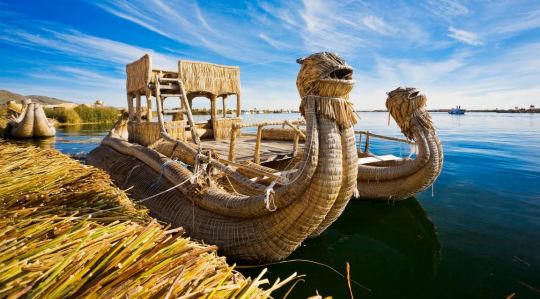
The fairytale-like Uros Islands are made entirely from totora reeds; the lives of the inhabitants of these artificial islands are entirely dependent upon the reed beds they live among.
#cuscojourneys#infomachupicchu#perutreks#incatrail#urosisland#floatingislands#urosislands#puno#islasflotantes#Peru#southamerica#backpackersouthamerica#backpackingtips#titicacalake#titicaca#amantani#sillustani#wanderlust#globetrotter#backpackers#picoftheday#smiling#natgeo#igerspuno#perutravel#discoverperu
7 notes
·
View notes
Text

Amantani, 2014
#picofthenight#travel#peru#original photographers#photographers on tumblr#nature#landscapes#landscape photography#mountains#country road#farmer#photoofthenight
45 notes
·
View notes
Text
Day 7 - Part 1 - Bus Ride
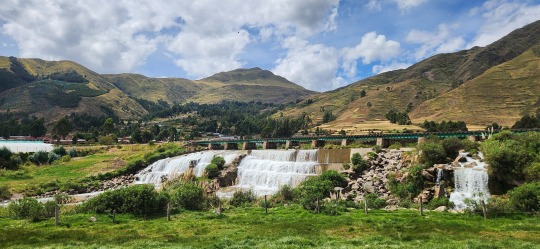
Photo by Holly
On Tuesday, we packed up and enjoyed breakfast in Puno before the van arrived to take us to the bus terminal. We put our bags beneath the bus, and climbed in. I sat with Claire; Haley and Alyssa were across the aisle, Bernadette and Austyn were in front of us and Holly was behind us. Our tour guide was named Marita and was very animated. She taught us a lot!
Did you know:
- Mathematics is the language of the universe
- Everything in the universe is composed of numbers and shapes, particularly 1, 2, 3, 4, 7, and 11.
Our first stop was an archeological museum, where our tour guide primarily discussed this statue.
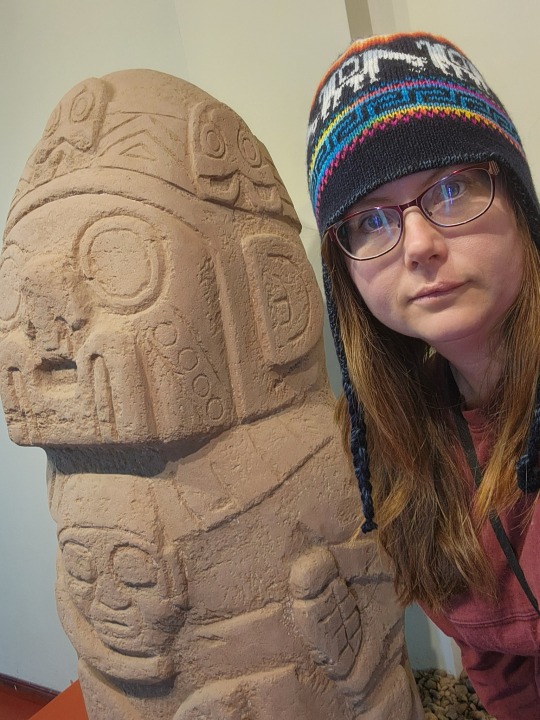
Photo by Holly
Did you know:
- The Andean peoples had 3 important animals, condor, snake, and puma
- The puma represented Fire
- Every living thing has an energy
- The core of the human energy is at the base of the spine.
- The sculpture has 6 skulls in the back plus the one it’s holding, totaling 7.
- Decapitation is just a way of getting rid of the bad energy
- This fire puma can climb up your spine through your 7 chakras
- Scientists say that we only use 4% of our brain (with Einstein and Steven Hawking etc using 7%)
- The fire puma unlocks the rest of your brain
- When it reaches your head, then you will gain clairvoyant powers and get a halo, just like Jesus, Buddha, and the saints.
- The 3 pumas on the sculpture represent the mental, the physical, and the astral.
- We can synthesize carbon 7 from carbon 12 using only our brains
- Carbon 12 is the most abundant material in the universe and makes up 1/5 of our DNA!
- Carbon 7 has 6 protons, 6 neutrons, and 6 electrons
- 666 is the key to the future reality, not the antichrist, which is the biggest lie spread by the Catholic Church
- The truth of reality is hidden in ancient sculptures, we just need to understand it
I learned so much! She also showed us around to a display of belts and other artifacts.
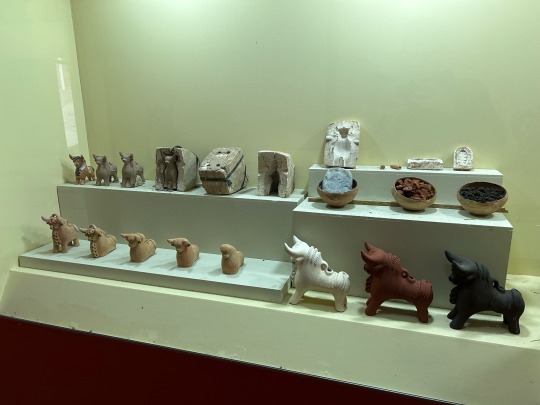
Did you know:
- Traditional Andean head bands were really used to protect the third eye
- Belts like those on Amantani, are really used to protect the energy core at the base of the spine
We looked around the gift shop and was tempted by very colorful shoes!

We reloaded onto the bus and made our way over the top of the mountains between Puno and Cusco before stopping for lunch.
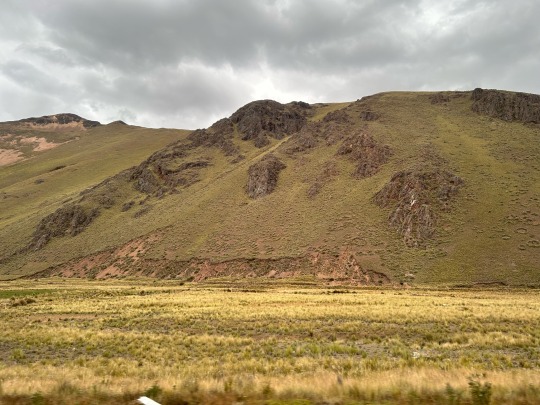
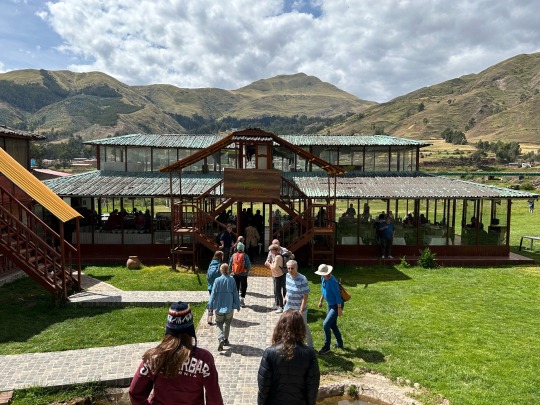
We enjoyed our food and the live musicians who, to our amusement, played an Andean adaptation of Sound of Silence.
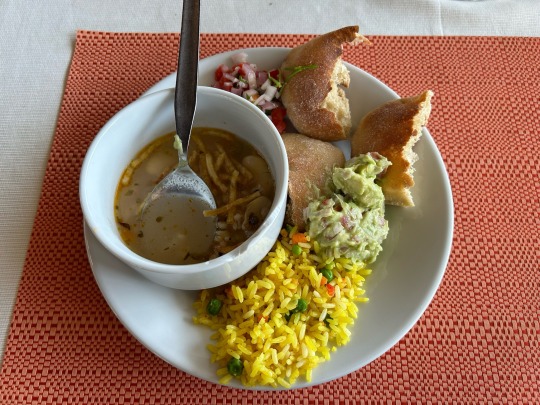
Behind the restaurant were hammocks and a swing set with beautiful views.
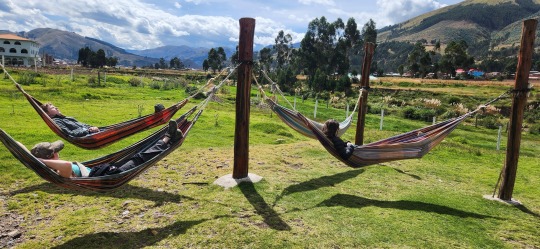
Photo by Holly
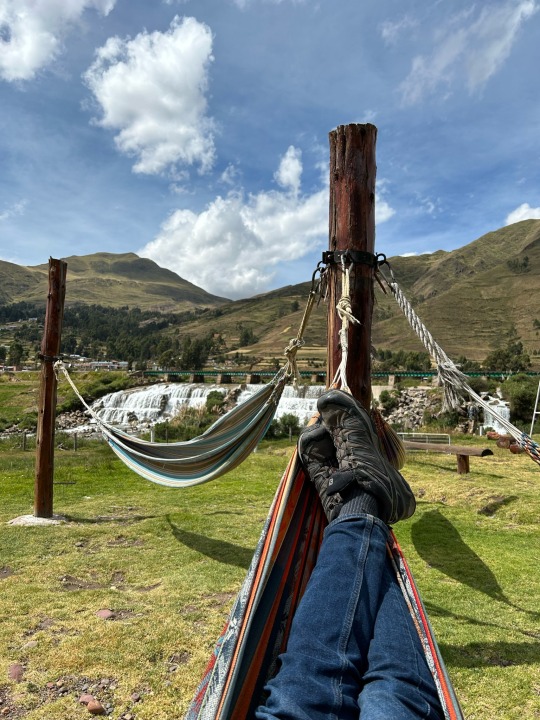
There should be more swing sets in scenic places!
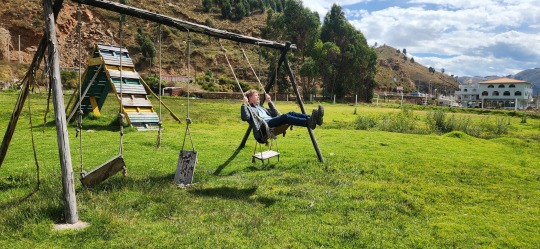
Photo by Holly
Continued in Part 2!
3 notes
·
View notes
Text
1 novembre :
Matinée dédiée aux corvées: séchage de tente et du sac de couchage, nettoyage des chaussures et de la popote, lessive, etc. L'après midi je constate avec regret que le seul musé qui m'intéressait est fermé car c'est jour férié. Pas grave je fais un massage "Inka" à la place. Les dommages du sac lourd sont rafistolés et la masseuse me met des pierres brûlantes sur tout le corps.... autant je pense bien tenir le froid, mais c'est au détriment de ma tolérance à la chaleur... J'espère que ça sert à quelque chose au moins. Le soir je mange une pizza familiale et je refais mon stock de calorie. Puis bus de nuit pour Puno sur le lac Titicaca.
2 novembre :
Arrivé au aurores, je pose mon sac à l'hôtel et j'enchaîne avec un tour organisé à la journée sur ce lac situé à 3800m d'altitude et dont la superficie est égale à 14 fois celle du lac Lémen. Je m'attends au pire pour cette journée d'attraction touristique, mais le lac est sur mon chemin vers La Paz, autant en profiter. On commence par visiter les îles flottantes (artificielle, en roseau) Uros où habitent les communautés du même nom. Elles ont abandonné leur activités de pêche pour se dédier exclusivement au tourisme (Ça a dû être sympas le covid). Puis visite de Amantani, une autre île avec d'autres communautés où on y fait une ballade de 1h. Puis retour à Puno (~6h de bateau en tout). Pizza et 1er Pisco Sour après quasiment 1 mois au Pérou et à la veille de mon départ pour la Bolivie.
3 novembre :
Bus pour Copacabana, ville supposée charmante au bord du lac Titicaca côte Bolivien d'où plusieurs excursions peuvent se faire, comme par exemple la fameuse Isla del Sol. Je n'y resterai que 1h le temps de manger et visiter la cathédrale... J'ai besoin de hautes montages andines, pas de paysages grecs de qualité contrefaçon chinoise. Donc bus pour La Paz. Ce qui me fera une journée transport mais sans regrets.
4 novembre :
Visite de la très moche La Paz. Bon je suis un peu sévère, elle a un certain charme mais uniquement lorsque contemplée de façon très macroscopique. En prenant par exemple le téléphérique qui fait office de métro, on peut prendre de l'altitude et admirer la ville qui s'étant dans une cuvette (et qui y déborde allègrement) avec au loin des glaciers. Les panoramas sont impressionnants sur cette "Toulouse" (tout est en brique mais je ne penses pas que ce soit pour des raisons esthétiques) et je passe 2h dans le téléphérique à faire toutes les lignes possibles. Sinon je visite quelques églises et me ballade à pied dans la ville, mais franchement c'est pas Rome.
5 novembre :
Parmis les glaciers qui dominent au loin La Paz il y a le Huayna Potosi à 6077m (!!!), et comme il fait beau les 3 prochains jours, je m'embarque dans une rando vers son sommet. Le premier jour (sur 3) consiste à rejoindre le camp bas (4800m) en voiture et de s'entraîner avec les crampons et piolets sur une langue du glacier qui s'étend pas loin du refuge. 1er expérience pour moi avec un tel équipement et dans un tel environnement. Je prends du plaisir à marcher sur le glacier puis de grimper un mur de 10m. Évidement je suis encordé et j'ai un guide personnel. Journée tranquille physiquement et nuit dans un refuge confortable où je fais la connaissance d'un groupe de 10 personnes avec qui je passerai les 2 prochains jours.
6 novembre :
Grasse matinée. Pour des raisons d'organisation entre les groupes qui se succèdent vers le refuge "haut" (5270m) et d'acclimatation pour les fragiles (comme moi il y a maintenant un mois) la journée sera tranquille aussi. Vers 12h00 on part pour le prochain refuge. Je fais le trajet tout seul, sans suivre le groupe, en 1h. J'avoue être particulièrement en forme, je suis très excité de faire mon 1er sommet > 6000m. Mon rythme impressionne les guides et le groupe qui me suit. Du coup mon guide décidera de me faire partir du refuge pour grimper le sommet 1h après les autres. Sinon je risque d'arriver trop tôt pendant la nuit et de me geler les gamètes mal. Mais avant cela on dîne à 17h00 et se couche à 18h00. Réveil prévu pour 00h30 mais j'ai vraiment du mal à dormir, j'ai mal à la tête. Mais c'est le seul symptôme de l'altitude. Au Kilimandjaro c'était bien pire, et cette référence me donne de la force et je reste très positif pour l'ascension.
7 novembre :
Au réveil je pense avoir tout de même réussi à dormir 1h, et surprise, je n'ai plus mal à la tête. J'avale le petit dej, enfile crampons et harnais et c'est partit pour l'aventure. Tous les voyants sont au vert lorsqu'on commence, avec mon guide, à marcher sur le glacier. Je suis forme, je n'ai pas froid (je ne porte pas ma doudoune et il fait -7°C), pas de symptômes de mal d'altitude, la glace n'est pas couverte de neige et les crampons accrochent bien. Ce qui fait qu'on fonce, on double tout le monde et 3h30 plus tard on arrive au sommet, tous seul. Les 2es plus rapides atteindrons le sommet en 5h. Mais il fait encore nuit et on attend 1h dans le froid que le soleil se lève. Les paysages me réchauffent les yeux et par conduction thermique tout le corps (et non le boulot ne me manque pas!). Après la séance photos mais sans le drone (que j'ai trimballé mais qui a complètement gelé le rendant HS pour le moment), nous entamons la descente. Je prends conscience alors des paysages, de jour cette fois, et j'embête mon guide à faire plein de pauses pour capter par caméra les vues (le drone a décongelé). Arrivé au refuge je fais une siete en attendant les autres, qui seront dans l'incompréhension totale lorsque je leur donne mon temps d'ascension. Mon ego est flatté, surtout que je n'ai pas l'impression d'avoir poussé mes limites physiques. Puis retour au camp "bas", trajet jusqu'à La Paz, douche, sieste, dîner, bière, dodo.
Bilan Huayna Potosi: 13km, 1500m d+ (l'effort n'est pas du tout représentatif de ces stats)
8 novembre :
Et non, pas de repos, réveil à 6h30 pour visiter 2 canyons dans les environs de La Paz: le Canyon de Palca puis la Valle de las animas. C'est assez uniques comme paysages, les canyons s'étant formés dans la terre (bien plus malléable que la roche) et donnant des formes de pâte à modeler faite par un enfant de 3 ans (mais un enfant avec une fibre d'artiste). Sur le chemin je ne croise que des chiens qui me feront sortir de ma zone de confort plus qu'au Huayna Potosi...
Bilan : 21km, 800m d+
3 notes
·
View notes
Text

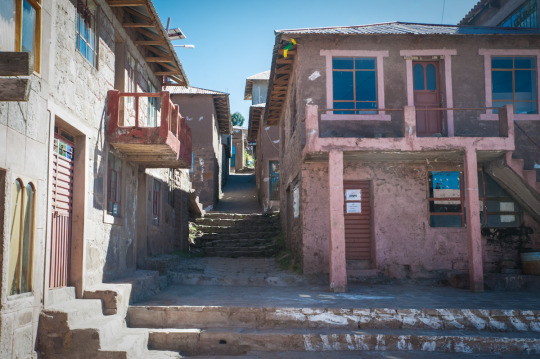
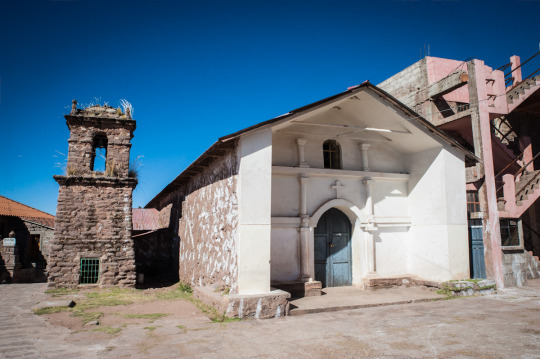
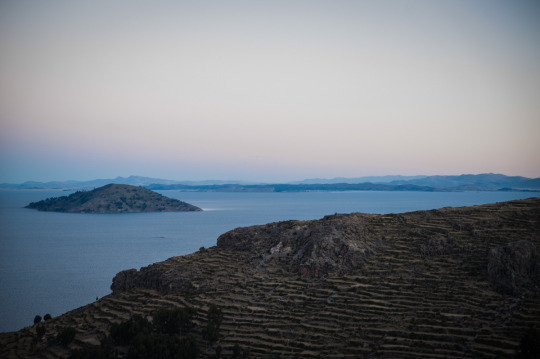
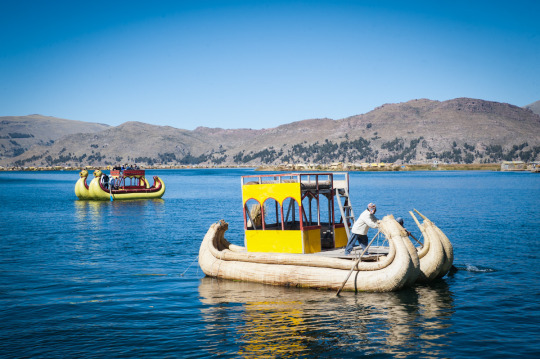
Titicaca & around 2016 (2) (3) (4) (5) by Eugenia
Via Flickr:
(1) Road to the harbour, Amantani island (2) (3) Taquile Island (4) Sunset at Isla Amantani (5) Uros boats
2 notes
·
View notes
Text
Lake Titicaca: Explore the Highest Navigable Lake with Terres des Incas
Experience the mystical beauty of Lake Titicaca, the highest navigable lake in the world, with Terres des Incas. Visit the famous Uros floating islands, made entirely of totora reeds, and meet the indigenous communities who have preserved their traditions for centuries.
Other highlights include: 🚣 Taquile Island – Known for its UNESCO-recognized textile art 🏝 Amantani Island – Where you can stay with a local family and experience authentic Andean culture 🌊 Breathtaking landscapes of the Andean highlands
Let Terres des Incas take you on a journey to Lake Titicaca, where ancient traditions and stunning scenery come together!
0 notes
Photo

Puno y Amantaní acogen proyecto artístico internacional sobre el agua
La ciudad de Puno y la isla de Amantaní serán el escenario de «Qota el espíritu del agua», un proyecto artístico internacional que se desarrollará del 25 de febrero al 5 de marzo. Guadalupe Estofanero, directora de la Asociación Cultural Chaska Ñawi, lidera esta iniciativa que reúne a artistas de Colombia, Argentina, España y Portugal para reflexionar sobre el agua a través de laboratorios y creaciones colectivas.
El proyecto, que se lleva a cabo en las faldas del lago Titicaca, busca conectar experiencias territoriales relacionadas con el agua. «Cada artista trae consigo las vivencias de su región, y juntos crearemos una interpretación colectiva de este elemento vital», explicó Estofanero. Las actividades incluyen talleres y una muestra final el 2 de marzo en el Parque Pino de Puno.
Además de su enfoque artístico, «Qota» tiene como objetivo sensibilizar sobre la importancia del agua y los desafíos que enfrenta el lago Titicaca. «El ser humano no valora el poder de estos elementos y los maltrata. Nuestro lago sufre contaminación y carece de los recursos necesarios para su limpieza», señaló Estofanero. Artistas como Magdalena Serpa (Colombia) y Mike Harve (Argentina) guiarán a los participantes en la creación de una obra colectiva que simbolizará la unión y el respeto por este recurso.
Con esta iniciativa, Puno se consolida como un referente en las artes escénicas iberoamericanas. «Estamos orgullosos de llevar el nombre de nuestra ciudad a nuevos horizontes», concluyó Estofanero, destacando el impacto cultural y ambiental del proyecto.
Puno
via https://pachamamaradio.org/puno-y-amantani-acogen-proyecto-artistico-internacional-sobre-el-agua/
0 notes
Text
Puno: Continúa descenso del nivel del agua en el Lago Titicaca por déficit de lluvias
Más de 10 embarcaciones, conocidas como lanchas, que solían operar desde el puerto muelle de la ciudad de Puno para transportar pasajeros a las islas Los Uros, Taquile y Amantani, han quedado varadas en tierra firme. Este fenómeno se debe a la constante disminución del nivel de agua en la bahía interior del Lago Titicaca, un problema que ha alcanzado niveles alarmantes en los últimos meses debido…
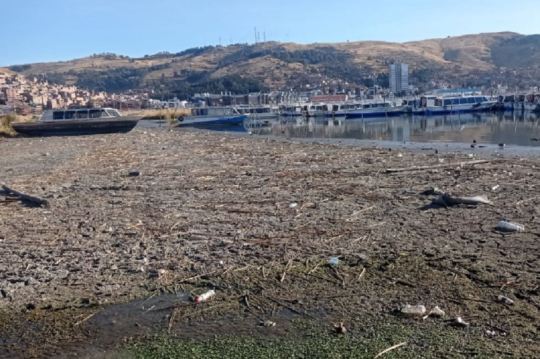
View On WordPress
0 notes
Text

Workers in a potato field - Amantani, 2014
#original photographers#photographers on tumblr#travel#peru#street photography#light and shadow#farmers#b&w photography#monochrome photography#workers#blackandwhite
10 notes
·
View notes
Text
Day 6 - Communal Farming & Technology

Photo by Alyssa
Communal Farming - Henry described how people worked the shared community land and were able to share in its fruits. However, when laws changed and people were able to buy land, their system broke down. While I understand the allure of land ownership, especially when competition and free markets are at play. But for isolated communities like Amantani and Taquile, a communal system makes the most sense.

Photo by Holly
Technology - When mining companies are trying to win over a community, they'll provide computers to schools in a bid for the town to not oppose their contracts. Clearly, the mining companies do not do it for the sake of the town or students. Do the schools have the infrastructure to maintain/repair the technology? Even here in the states, we can't maintain our Chromebooks and every Chromebook cart in middle/high school had a bunch of duds. The schools are being set up to fail, just as the communities are being exploited. I wonder if there is a more sustainable way to provide communities with access to technology that will actually help them.
0 notes
Photo

Isla Amantani - Lago Titicaca, Perú
2 notes
·
View notes
Photo
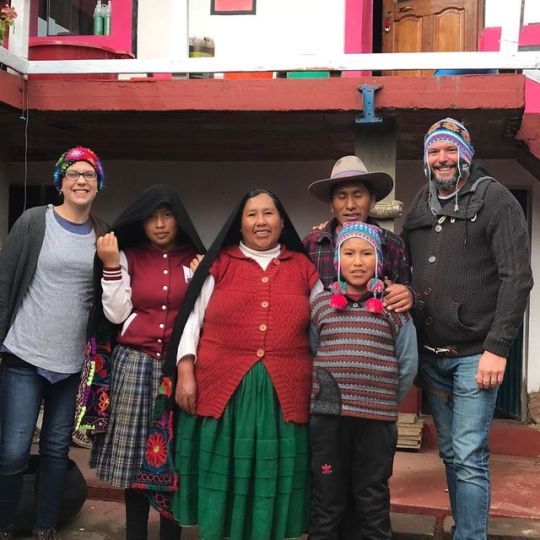
After a wonderful evening and breakfast with David and Flavia’s family, it was time to say our goodbyes and head to the Island Taquile. #family #amantani #laketiticaca #peru #adventure #vacation #anniversary (at Amantani Island, Peru) https://www.instagram.com/p/B30qnZ2neCO/?igshid=avmkirmf9bo1
2 notes
·
View notes
Photo
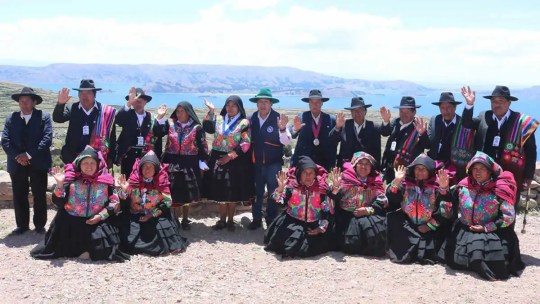
Puno: Amantaní celebra fiesta tradicional de dualidad de Pachatata y Pachamama
Diez comunidades del distrito de Amantaní, en Puno, participaron en la tradicional fiesta de Pachatata y Pachamama, también conocida como la festividad de San Sebastián, en Pata Pampa. La celebración incluyó la presentación de las danzas típicas en honor a Pachatata y Pachamama.
Previo a las danzas, se realizó un ritual de ofrenda en la cima del apu sagrado Pachatata y en el cerro Pachamama, destacando la dualidad de ambos lugares. Este acto ceremonial fue dirigido por un sabio andino, acompañado de música y danza tradicional.
La alcaldesa de Amantaní, Reina Juli Calsin, explicó que esta festividad, celebrada cada tercer jueves de enero, conecta a los habitantes con las fuerzas naturales y el universo. La combinación de rituales, música, danzas y comunidad transforma la isla en un espacio de espiritualidad y tradición.
La autoridad también mencionó que esta celebración simboliza la unidad y fortaleza de la comunidad, además de ser una oportunidad para pedir una buena producción agrícola para el año en curso, asegurando el sustento de la población.
((🔴)) #Amantani #PUNO #regional Fotos exclusivas de la celebración tradicional fiesta de «Pachatata» y «Pachamama»…
Publicado por Pachamama Radio en Jueves, 16 de enero de 2025
Puno
via https://pachamamaradio.org/puno-amantani-celebra-fiesta-tradicional-de-dualidad-de-pachatata-y-pachamama/
0 notes
Text
nosotros.
amándonos bajo la luz de la luna con las hojas caídas del otoño y eramos infinitos.
sin embargo, cambiamos.
ahora somos dos desconocidos, mirandonos sin vernos recordando noches eternas que ya no valen lo mismo que antes.
mamá me dijo que somos jóvenes pero no se sentía así cuando tomabas mi mano ni cuando me contabas historias sobre nosotros como si fueramos los protagonistas.
ahora solamente me dices hola, cuando te acuerdas. y si lo digo yo me ignoras. y está bien. solamente extraño tu voz diciendome que tendríamos un castillo de sueños.
ya no somos lo que solíamos ser y en tu lugar hay otra persona y quizá en el mío también.
mamá me dijo que no tema que la gente cambia sin embargo aún extraño porque lo recuerdo.
también me dijo que esto es crecer. quizá ya no quiero hacerlo.
8 notes
·
View notes